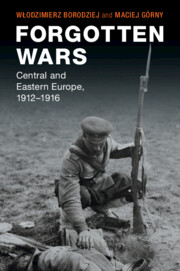Book contents
- Forgotten Wars
- Studies in the Social and Cultural History of Modern Warfare
- Forgotten Wars
- Copyright page
- Contents
- Figures
- Maps
- Capsules
- Additional material
- Introduction
- Part I The Fronts
- 1 The Road to War
- 2 Prelude: The Balkans 1912–1913
- 3 Before the Leaves Fall from the Trees …
- 4 Breakthrough
- Part II The Rear
- Part III Occupation
- Afterword
- Select Bibliography
- Index
1 - The Road to War
from Part I - The Fronts
Published online by Cambridge University Press: 15 March 2021
- Forgotten Wars
- Studies in the Social and Cultural History of Modern Warfare
- Forgotten Wars
- Copyright page
- Contents
- Figures
- Maps
- Capsules
- Additional material
- Introduction
- Part I The Fronts
- 1 The Road to War
- 2 Prelude: The Balkans 1912–1913
- 3 Before the Leaves Fall from the Trees …
- 4 Breakthrough
- Part II The Rear
- Part III Occupation
- Afterword
- Select Bibliography
- Index
Summary
The empires experienced the nineteenth century in different ways, and their experience was generally a bad one. The only empire to emerge in Central and Eastern Europe at that time – the German Empire – was also the only one that could regard the decades leading up to 1914 as a success.Four powers figured on the map of Central and South-Eastern Europe in 1815: Prussia, Russia, Austria, and the Ottoman Empire. At the outbreak of war a century later, the northern borders appeared remarkably stable. Germany shared a border with Russia on Polish soil. Austria had evolved into Austria-Hungary, but its northern border had barely changed; only in the south, following the annexation of Bosnia-Herzegovina in 1908, did it extend much further than before. And indeed it was here, in the Balkans, that the changes were biggest, with the Ottoman Empire having lost its European foothold.
- Type
- Chapter
- Information
- Forgotten WarsCentral and Eastern Europe, 1912–1916, pp. 13 - 35Publisher: Cambridge University PressPrint publication year: 2021

